- NJASA
- Community Corner Nov. 23
-
Building Community Schools
How Public Schools Can Give Back and
Secure Wins for AllIn November of 2022, the Township citizens passed a $188 million bond referendum for capital improvements of our public schools. Never before had such a massive undertaking been explored to significantly repair, improve and upgrade infrastructure, HVAC equipment, classroom spaces and outdoor fields and facilities.
COVID-19 had exposed much of the decay in facility infrastructure and the need for clean air and high-quality HVAC equipment. These were very old buildings, some more than a century old, and yearly maintenance fell far short of addressing the root causes and necessary refurbishment. The Township strongly supported and rallied around passing the bond, mobilized by energetic and passionate groups of parents/guardians from the Parent Teacher Association Council (PTAC). As the district worked to educate the Township about this bond proposal calling it a Community Investment, it became evident that there was something more we could do to support the citizens supporting our schools.
How could the district repay the citizens for their generosity and faith in the public school system? Their show of support needed more than refurbished buildings. Out of this idea to give back, the community school vision was born.
To promote this vision and take all the steps along the way to making it a reality, we followed the eight step change model introduced by John Kotter (1996). Kotter, a Harvard Business School Professor and a renowned change expert, describes the eight steps of a project from start to finish with clear guidance on the entire process. Follow us on our journey to building community schools.
Step 1:
Creating an Urgency: The urgency for our district was quite evident. Our buildings needed to be overhauled; the project to improve them involved a multi-million-dollar bond referendum; and the community deserved something other than capital improvements to school buildings. We also needed improvements to security and camera features to once again allow visitors while ensuring safety as the top priority. The community felt isolated from the effects of COVID-19 and online learning as schools were no longer hubs of activity and welcoming gathering places. Our urgency to develop community schools was an outgrowth of these circumstances.Internal meetings ensued with various administrators, faculty and staff to loosely discuss the concept. Questions were posed, “Can children learn if they are hungry? Have a toothache? Have family members that need medical care? Have a safe place to meet friends? Can schools become gathering places once again?”
We had to examine how we could provide opportunities to effectively answer these questions. In order to do so we would need support from community members, faith groups, health care industry leaders, and more. We set about making connections.
Bottom Line: Create and DEFINE your Urgency
Step 2:
Forming Powerful Guiding Coalitions: This is where the power of connections comes into play. We strategically brought in community leaders to brainstorm about how public schools could better serve the community. We spoke individually to separate groups before bringing them together. This involved faith-based organizations, food pantry services, health care industry leaders, neighborhood development groups, and senior citizen organizations. Cultural differences played a major role in our initial meetings, and we made a determined effort to draw in people connected to our growing immigrant population. The importance of culture emphasized our value system, as we were ready to form a guiding coalition of key stakeholders that would lead us to the implementation stage.Once a guiding coalition is established, this becomes your team and the team begins to do the intricate work which would first begin with a needs assessment. We had to be very strategic in these planning stages, but not so caught up in the planning that we couldn’t get to the “go” stage.
Bottom Line: Coalitions/Cultures coming together as a team
Step 3:
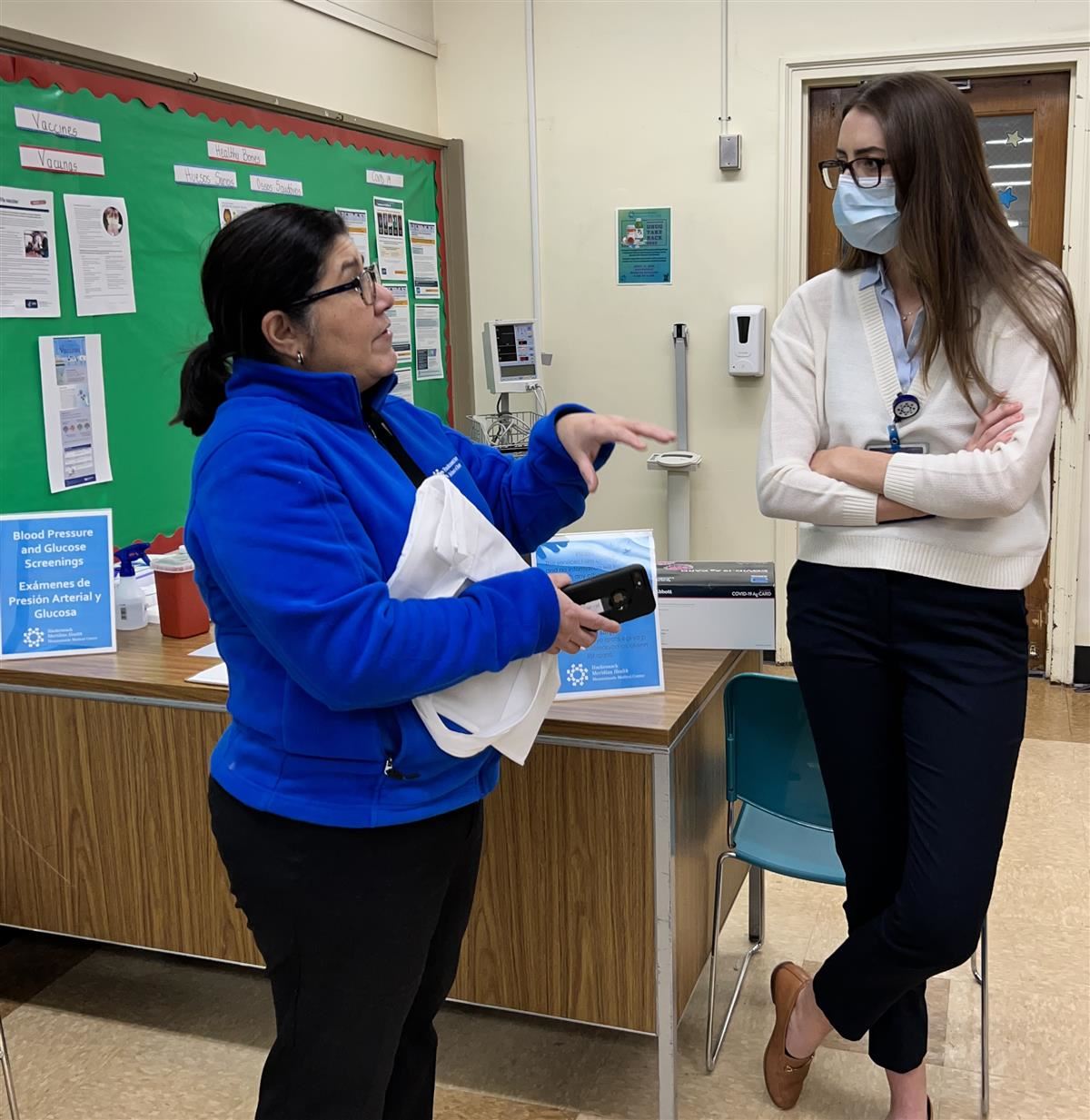 Developing a Vision and a Strategy:
Developing a Vision and a Strategy: The vision for community schools was supporting all residents with safe gathering places, educational and recreational opportunities, and supportive services in the health and mental healthcare industries. The coalition analyzed a needs assessment of the community and strategically set out to start community schools with health-based services and eventually expand on this concept to include other services. We simply realized that we had to start and then build and create short-term wins as the concept of community schools took hold.
Additionally, the initial strategy had to include the evaluation of physical spaces within the school without incurring additional expenses. We found space in two schools located on opposite sides of town as we wanted to offer the community convenient access. We outfitted the spaces with a laptop, a screen for viewing presentations, two desks for working with “customers,” and a few seats as a waiting area. All minimal furnishings but just enough to get us started.
Bottom Line: Keep your vision and strategy simple and focused on small wins
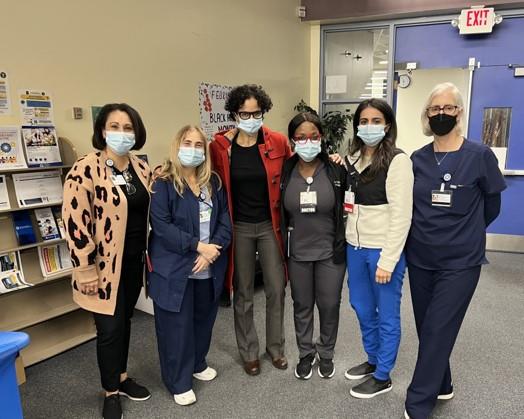 Step 4:
Step 4:
Communicating the Vision: The concept of Community Schools was communicated to administrators and staff as they were part of the Guiding Coalition. We explained each step of the process to our Board of Education (Board), and once we secured the provider of health services, we developed a Memorandum of Understanding with our partner.This Memorandum was a major component as the details of days and times of services, array of services to be provided, need for security at the school locations and other logistical details were specified and approved by the Board.
Announcements and flyers were created in multiple languages. We distributed flyers to community places and asked our partners to use them with their newsletters. We were determined to reach as many people as possible and especially those who didn’t necessarily have children in the schools or did not get information easily because of language barriers, which brings us to Step 5.
In each phase of the communication process, we sought advice from stakeholders. Everyone was valued and validated for their particular contributions. The best way to reach the community is with the community themselves involved from the ground up.
Bottom Line: One can never have too much communication
Step 5:
Removing Obstacles: Language barriers in a community with a growing multilingual population was one of the first obstacles we tackled. We made sure all literature was readily available in multiple languages and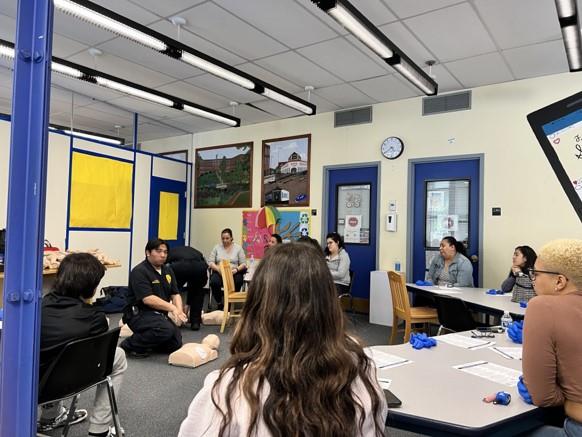 had interpreters or online translators on site at the community school locations but also at special events.
had interpreters or online translators on site at the community school locations but also at special events.Another obstacle was simply countering the skeptics who said, "What does community health services have to do with educating our kids?” As educators, we knew from the research and from first-hand experience that students learn best when they feel well, are well nourished and are mentally healthy. The state of their families’ health, as well as extended friends and family, also contributed to their focus and resilience in the school setting. We provided examples to our stakeholders, held meetings and talked about how overall community health directly impacted students' well-being.
Bottom Line: Embrace obstacles as tools for building trust
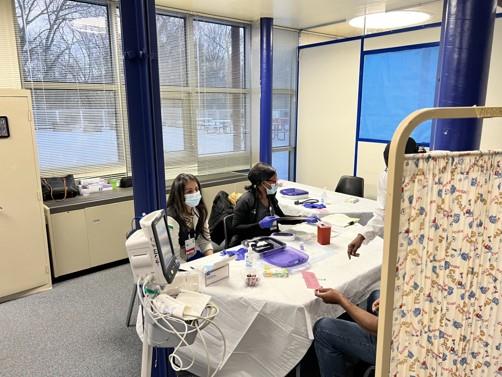
Step 6:
Creating Short-Term Wins: In creating our community schools model we chose just two schools as the pilots. Our focus of services began with healthcare. These are short-term wins, and we see progress each and every week. We continue to advertise our open school buildings and the services being offered. Next steps will be once again bringing stakeholders together to pilot and expand our services in other fields. Workforce development classes and athletic training opportunities are two areas we see as promising. With measured and determined steps, you ensure that you do not exhaust resources nor put too many demands on your community partners who will be your champions.Bottom Line: Start small to gain big
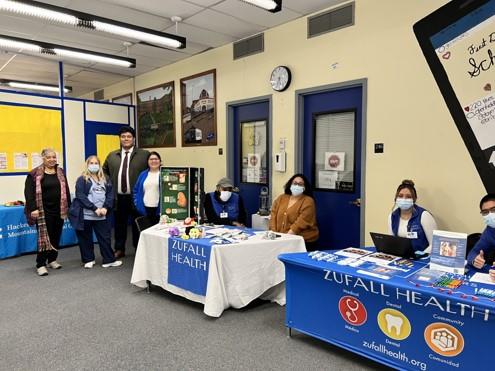 Step 7:
Step 7:
Consolidating Gains: Wrap up the pilot program with a community announcement and/or report to your Board, stakeholders and the community at large. Here is where you show appreciation for the work and collaboration of all involved and give the team talk to keep everyone engaged and motivated to not only continue the work but expand it. Never underestimate the power of a “thank you.” The more credit you can give the stakeholders, the more solidly the concept of community schools will grow. This is a win for everyone, a tangible display of the commitment of public schooling giving back to the community.Bottom Line: In your final report, thank everyone again and again
Step 8:
Anchoring Change in the Corporate Culture: The change is anchored by the solid relationships you build and the energized spirit of the community to continue to work and grow the concept. We started small with a major hospital becoming our partner and here is their testimony:"Mountainside Medical Center actively collaborates with community agencies to bring needed services to the community. The hospital’s partnership with Montclair Public Schools allows residents access to free health screenings and the opportunity to connect with healthcare providers in a safe environment. Our goal is to empower residents to take charge of their health by providing them with the tools needed for successful health management, which includes health education and referrals to specialists when appropriate."
Florey Cruz-Cerpa
Director of Community Outreach
Co-Chair of the Diversity, Equity and Inclusion CouncilWe also engaged our community food support organization, Toni’s Kitchen, which welcomed the opportunity to serve families. They donated food when people signed up for nutrition classes and made sure they advertised their services in such a way to make everyone feel valued. Executive Director of Toni’s Kitchen, Anne Mernin, had this to say,
“Partnering with Montclair Public Schools seemed like the right thing to do and couldn’t have come at a better time. So many of our residents had felt the aftermath of COVID with lost jobs, family illness and depression from feeling isolated. Offering nutritious meals was a tangible and comforting way to show the community we cared. Thanks to Montclair Public Schools, we had an expanded avenue to reach more people and offer useful resources.”
The Montclair Neighborhood Development Corporation (MNDC) was eager to partner with us as they had been supporting our after-school tutoring efforts, summer camp offerings and athletic competition opportunities. Now with a blossoming community school initiative, MNDC pitched in to communicate to the public, distributed flyers and was more than happy to be a vocal advocate for citizens in need. Rev. Dr. A. Craig Dunn, Executive Director of MNDC, stated, “Partnering with Montclair Public Schools has been a huge win for the community at large. Helping our hard-to-reach families in need was always a challenge, but now we have a viable solution in that we can direct them to our Montclair Community Schools.” Montclair Public Schools is grateful for the positive and enthusiastic tutoring and mentoring from the MNDC program Project Oasis. Parents have expressed that the counseling and homework help have been game changers for their children. Here’s what one parent had to say, “No longer do I need to, at the very end of the day, devote time to making sure she's done her homework, time where we're both exhausted and the last thing we want to do is homework, now that time is spent reading, reviewing for tests and just hanging out. The reduction in stress is palpable, real and very much appreciated.” Creating these partnership pathways is integral to the community school environment and extends learning beyond the traditional school day.
At the end of the day, parents and families will support community schooling when they are involved from the beginning and contribute their ideas and suggestions along the way. Parents and families are your most important advocates and can reach the hard-to-reach, can talk to those who are resistant and can speak from a personal and trusted perspective. One of our family advocates, Ms. Marcia Almeida, became a trusted advisor and worked hard to ensure our multilingual families had the materials and resources in understandable terms. Ms. Almeida said, “Knowing that families who may feel uncomfortable about asking for help have a place to go to find answers and won’t be questioned about their particular situation is how the school can help families feel safe and secure and that will better help our children.”
Bottom Line: Anchor a change with strong partnershipsHaving been through not quite a year of building community schools, we see many opportunities for growth. In addition to our health services, we are developing workforce development courses in partnership with a community college, expanding workforce development opportunities for Special Education and Multilingual learners partnering with community businesses, and opening our playing fields to broaden access to children who may not otherwise engage in youth sports. As we continue to grow and move forward, we follow the steps in John Kotter’s eight-step change model. At this leg of the journey, we are solidly footed in partnerships and relationships which can make or break a good plan. Build your relationships and be open-minded to turns and shifts you may not anticipate, and you are on your way to realizing your goals.



